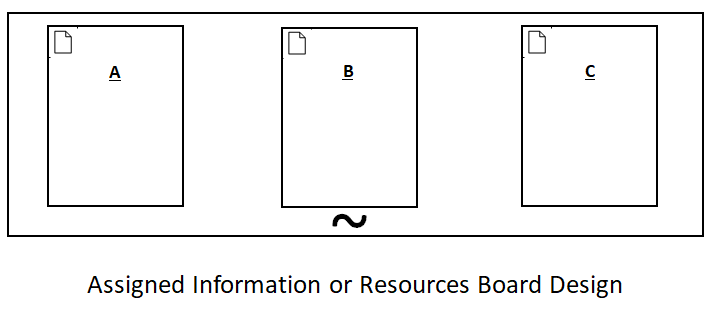Pattern: ASSIGNED INFORMATION
Problem: Situations or projects in which we need to organize information or resources whose classification could change over time.
Motivation: We will use this pattern for visualizing quickly which is the state of our resources, or who has it assigned. One of the most frequent uses of this pattern is having people represented in lists and its assigned resources as cards. That information could flow between the different lists, but without any predetermined order. Lists could also be used for representing status of the resource, for example, when they don’t follow an established order (as in a pipeline) or a determined sequence of steps.
Solution and graphic representation: Each list represents the state of the resource where it is assigned temporarily, or the person assigned as responsible of that information. The divisions representated with lists shouldn’t follow any determined order. For example, if we represent people in lists, there mustn’t be any precedence or hierarchical relationship between them. If we use this pattern for representing something more abstract, list shouldn’t have a predetermined order as in a pipeline, where all activities are sequenced and follow a linear order. The resources represented in cards will flow between the different lists as they change their assigned person or their status.
Example:

In this template we have a first list where the components of a music group are stored. The other two lists are two examples of pubs where concerts will be held. Artists will flow indistinctly to one pub or another, depending on where they play. Pubs will not be ordered by any criteria, and artists could flow completely free.
Related Patterns:
This pattern is quite similar to “Information or resources lifecycle”, but without an established order between the lists. For this reason, “Information or resources lifecycle” is intended for representing pipelines or process with a determined order in their steps. With “Assigned Information”, the flow of the cards is unpredictable a priori and only depends on the real life factors that determine the assignment of the resource.
Trello Templates Examples:


